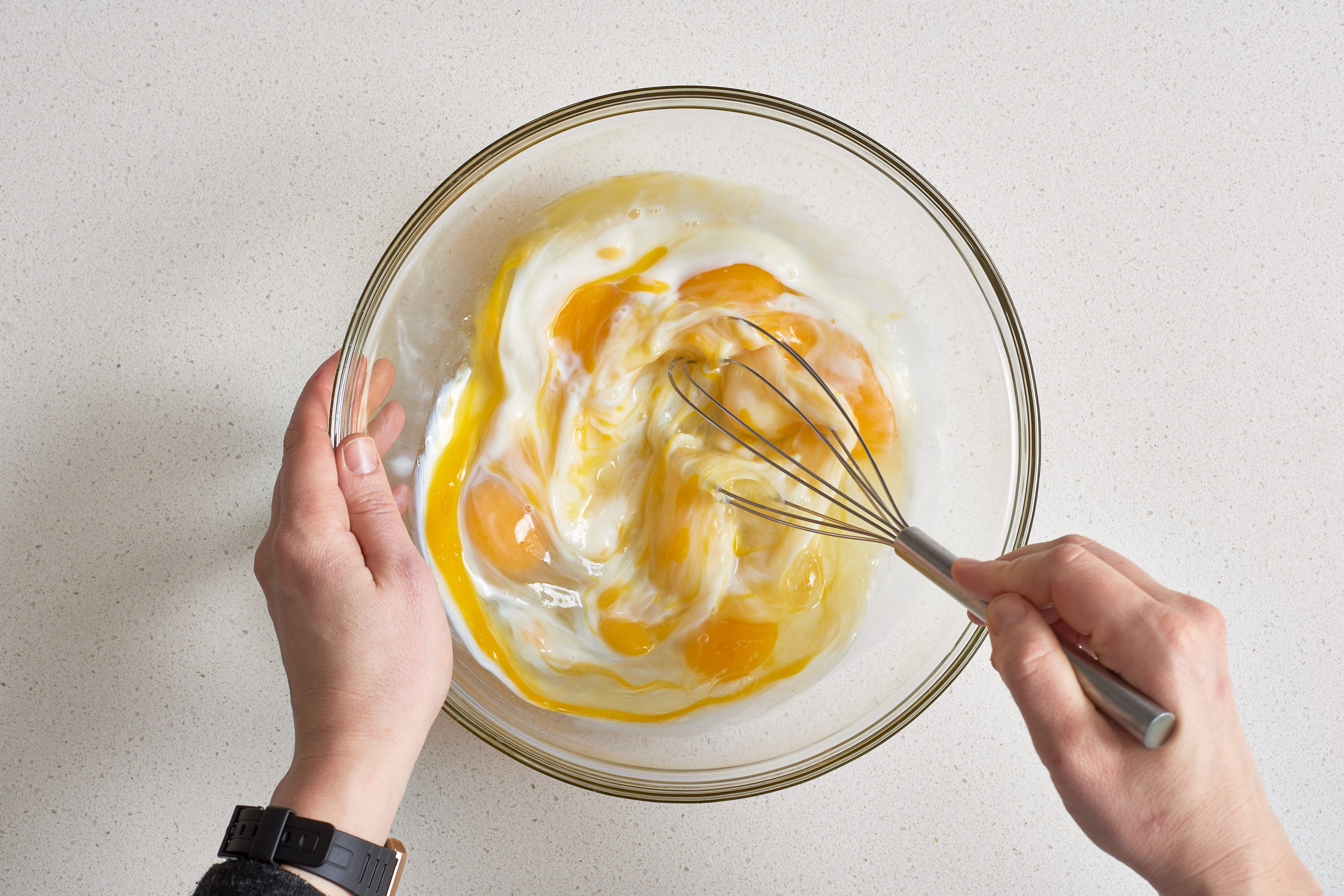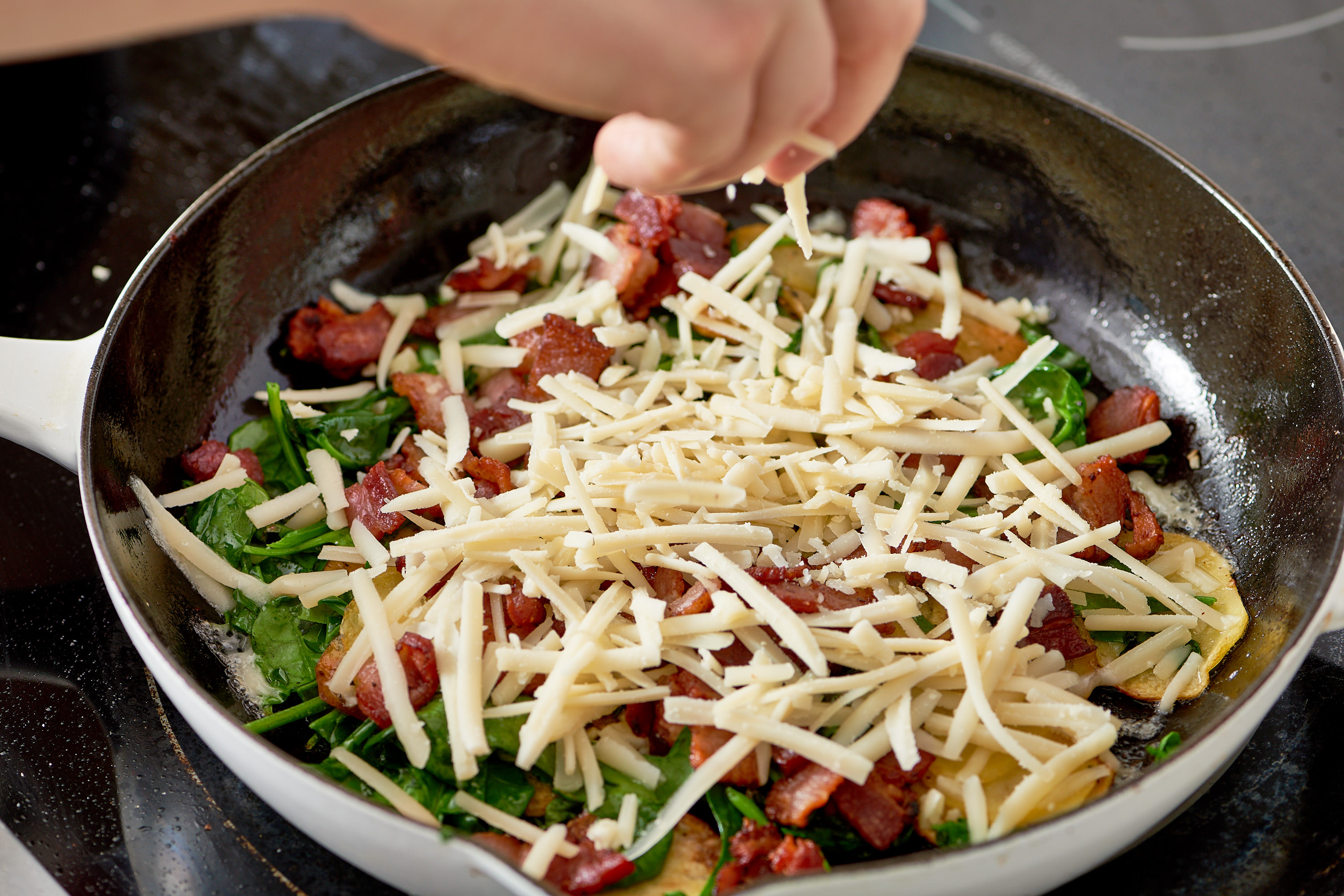
Photos by Joe Lingeman
Frittatas have saved me on more hungry weeknights than I care to count. As long as I have a few vegetables and maybe a little meat to throw in a skillet, I can have a frittata on the table in about 20 minutes. Let me tell you, there is nothing better than diving into a plate of steaming veggie-filled eggs when you’re home late and starving.
The Best Frittatas Are Simple
Frittatas were once my culinary nemesis. Everyone else seemed to think they were so easy-peasy, but mine always turned out dry or bland or unappetizing for one reason or another. Through trial and error, I learned some nifty tricks and gradually refined my technique. Almost without realizing it, frittatas became a regular visitor to my weeknight meal rotation.
In retrospect, I think I was making frittatas out to be more complicated than they actually are. There’s not really a “right” way to make them. The method I describe here is what consistently works for me, but I have no doubt that you will make tweaks of your own once you head into the kitchen.

The Frittata Ratio to Memorize
So how do you make a great frittata every time without always using a recipe? The answer is a ratio. For every six eggs, use 1/4 cup heavy cream, 1 cup cheese, and 2 cups total of vegetables and/or meat. This will get you a frittata with a hearty filling — especially if you’re using something like potatoes and bacon — and a creamy egg custard shot through with the tang of cheese.
For Your Information
- For every six eggs, use 1/4 cup heavy cream, 1 cup cheese, and 2 cups total of vegetables and/or meat.
- We do recommend a cast iron or oven-safe nonstick skillet. Stainless steel pans will work, but you’ll need extra oil to make sure the eggs don’t stick to the pan.
Serving Frittatas for Breakfast or Dinner
One frittata makes plenty for four to six people with a side salad or other steamed vegetable, and more than enough for two. The leftovers are nearly as good as frittata straight from the oven. I like to eat a wedge on top of a piece of toast for an easy lunch. And while I mostly rely on frittatas as a quick-fix dinner, they are wonderful for a hearty breakfast any day of the week, too.
Tester’s Note
Frittatas are everything to love about a quiche without the fuss of a crust. A simple whisk of eggs and dairy poured over sautéed veggies (and/or meat) and you have a dish you can serve any time of day. Kitchn’s original frittata post was more a formula and less a recipe — like the choose-your-own adventure books we read as kids, there was a list of suggested fillings and a wide range of amounts offered for egg, dairy, and seasoning.
Although this approach has served readers well, in this update we share our favorite iteration of the dish (let’s just say there are potatoes, bacon, spinach, and cheese involved!). Use 6 eggs to 1/4 cup heavy cream for a tender, creamy custard. This streamlined recipe will make it easier to execute and experiment.
—Patty, March 2018

How To Make a Frittata
Yield: Serves 4 to 6
Ingredients
For the eggs:
- 6 large eggs, enough to cover the ingredients
- 1/4 cup heavy cream
- 1 teaspoon kosher salt, divided
- 4 slices thick-cut bacon (8 ounces), chopped (optional)
- 2 small Yukon gold potatoes, peeled and thinly sliced
- 1/4 teaspoon freshly ground black pepper
- 2 cups baby spinach (2 ounces)
- 2 cloves garlic, minced
- 2 teaspoons fresh thyme leaves
- 1 cup shredded cheese, such as Gruyère, Fontina, or cheddar (optional)
Instructions
Heat the oven. Arrange a rack in the middle of the oven and heat to 400°F.
Whisk the eggs and cream together. Whisk the eggs, heavy cream, and 1/2 teaspoon salt together in a small bowl; set aside.
Cook the bacon. Place the bacon in a cold 10- to 12-inch nonstick ovensafe frying pan or cast iron skillet, then turn the heat to medium-high. Cook the bacon, stirring occasionally, until crisp, 8 to 10 minutes. Remove the bacon with a slotted spoon to a paper towel-lined plate and pour off all but 2 tablespoons of the fat. (If omitting the bacon, heat 2 tablespoons oil in the skillet, then proceed with adding the potatoes).
Saute the potatoes in bacon fat. Return the pan to medium-heat, add the potatoes and sprinkle with the pepper and the remaining 1/2 teaspoon salt. Cook, stirring occasionally, until tender and lightly browned, 4 to 6 minutes.
Wilt the spinach with the garlic and thyme. Pile the spinach into the pan with the garlic and thyme, and cook, stirring, for 30 seconds to 1 minute or until spinach wilts. Add the bacon back to the pan and stir to evenly distribute.
Add the cheese. Spread the vegetables into an even layer, flattening with a spatula. Sprinkle the cheese on top and let it just start to melt.
Pour the egg mixture into the skillet. Pour the egg mixture over the vegetables and cheese. Tilt the pan to make sure the eggs settle evenly over all the vegetables. Cook for a minute or two until you see the eggs at the edges of the pan beginning to set.
Bake the frittata for 8 to 10 minutes. Bake until the eggs are set, 8 to 10 minutes. To check, cut a small slit in the center of the frittata. If raw eggs run into the cut, bake for another few minutes; if the eggs are set, pull the frittata from the oven. For a browned, crispy top, run the frittata under the broiler for a minute or two at the end of cooking.
Cool and serve. Cool in the pan for 5 minutes, then slice into wedges and serve.